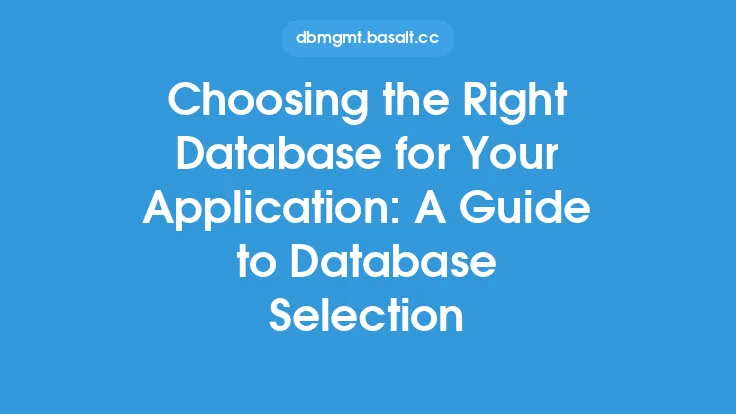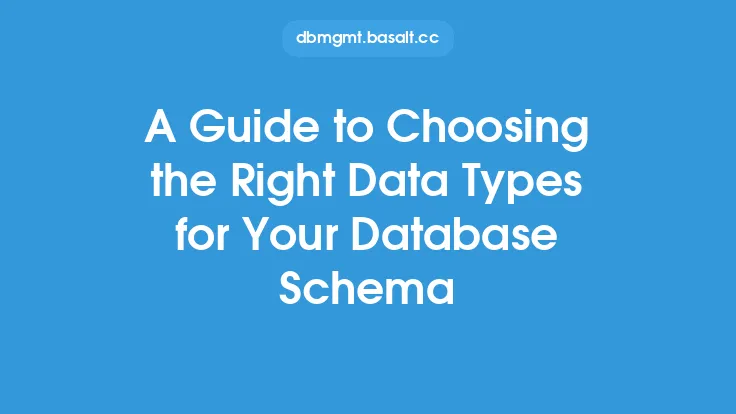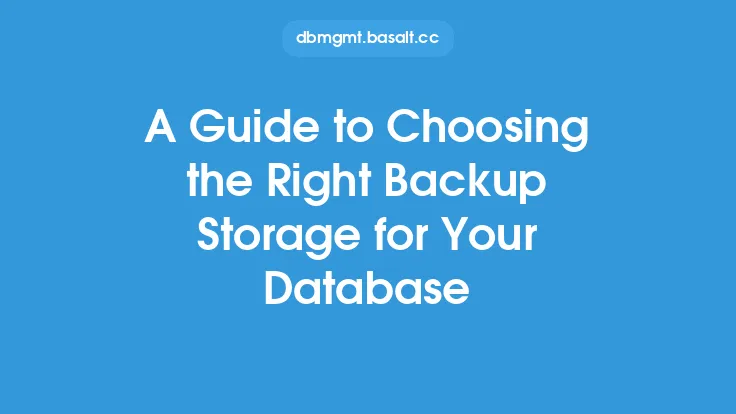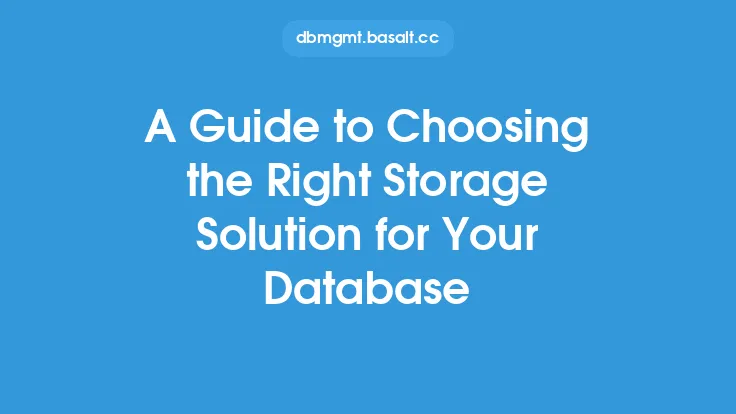When it comes to managing and analyzing large datasets, data aggregation tools are essential for extracting insights and making informed decisions. With so many options available, choosing the right data aggregation tool can be a daunting task. In this article, we will explore the key factors to consider when selecting a data aggregation tool, the different types of tools available, and the benefits of using them.
Introduction to Data Aggregation Tools
Data aggregation tools are software applications that collect, process, and summarize data from various sources, providing a unified view of the data. These tools are designed to handle large volumes of data, perform complex calculations, and provide real-time insights. Data aggregation tools can be used in various industries, including finance, healthcare, marketing, and more. They are particularly useful for organizations that need to analyze data from multiple sources, such as databases, spreadsheets, and external data providers.
Types of Data Aggregation Tools
There are several types of data aggregation tools available, each with its own strengths and weaknesses. Some of the most common types of data aggregation tools include:
- ETL (Extract, Transform, Load) tools: These tools are designed to extract data from multiple sources, transform it into a standardized format, and load it into a target system, such as a data warehouse.
- Data integration tools: These tools are used to integrate data from multiple sources, providing a unified view of the data.
- Data visualization tools: These tools are used to create interactive and dynamic visualizations of the data, making it easier to understand and analyze.
- Business intelligence tools: These tools are used to analyze and report on data, providing insights and recommendations for business decisions.
- Cloud-based data aggregation tools: These tools are hosted in the cloud and provide a scalable and flexible solution for data aggregation.
Key Factors to Consider When Choosing a Data Aggregation Tool
When choosing a data aggregation tool, there are several key factors to consider. These include:
- Data sources: Consider the types of data sources you need to aggregate, such as databases, spreadsheets, and external data providers.
- Data volume: Consider the volume of data you need to aggregate, as well as the frequency of updates.
- Data complexity: Consider the complexity of the data, including the number of fields, data types, and relationships between data entities.
- Scalability: Consider the scalability of the tool, including its ability to handle large volumes of data and high traffic.
- Security: Consider the security features of the tool, including data encryption, access controls, and authentication.
- Integration: Consider the tool's ability to integrate with other systems and applications, such as data warehouses, business intelligence tools, and data visualization tools.
- Cost: Consider the cost of the tool, including licensing fees, maintenance costs, and support costs.
Benefits of Using Data Aggregation Tools
Data aggregation tools provide several benefits, including:
- Improved data quality: Data aggregation tools can help improve data quality by identifying and correcting errors, inconsistencies, and duplicates.
- Increased efficiency: Data aggregation tools can automate many tasks, such as data extraction, transformation, and loading, freeing up staff to focus on higher-value tasks.
- Enhanced decision-making: Data aggregation tools can provide real-time insights and recommendations, enabling organizations to make informed decisions.
- Better customer service: Data aggregation tools can help organizations provide better customer service by providing a unified view of customer data.
- Competitive advantage: Data aggregation tools can help organizations gain a competitive advantage by providing access to real-time data and insights.
Technical Considerations
When evaluating data aggregation tools, there are several technical considerations to keep in mind. These include:
- Data processing: Consider the tool's ability to process large volumes of data, including its processing power, memory, and storage.
- Data storage: Consider the tool's data storage capabilities, including its ability to handle large datasets and provide data redundancy.
- Data security: Consider the tool's security features, including data encryption, access controls, and authentication.
- APIs and integrations: Consider the tool's APIs and integrations, including its ability to integrate with other systems and applications.
- Scalability and performance: Consider the tool's scalability and performance, including its ability to handle high traffic and large volumes of data.
Best Practices for Implementing Data Aggregation Tools
When implementing data aggregation tools, there are several best practices to keep in mind. These include:
- Define clear goals and objectives: Define clear goals and objectives for the data aggregation project, including the types of data to be aggregated, the frequency of updates, and the desired outcomes.
- Choose the right tool: Choose a data aggregation tool that meets the organization's needs, including its ability to handle large volumes of data, provide real-time insights, and integrate with other systems and applications.
- Develop a data governance plan: Develop a data governance plan that outlines the policies and procedures for managing and maintaining the data, including data quality, security, and access controls.
- Provide training and support: Provide training and support for staff, including documentation, tutorials, and ongoing support.
- Monitor and evaluate: Monitor and evaluate the data aggregation tool, including its performance, scalability, and effectiveness in meeting the organization's goals and objectives.
Conclusion
Choosing the right data aggregation tool is a critical decision for organizations that need to manage and analyze large datasets. By considering the key factors, types of tools, and benefits of data aggregation tools, organizations can make informed decisions and select a tool that meets their needs. Additionally, by following best practices for implementing data aggregation tools, organizations can ensure a successful implementation and maximize the benefits of their data aggregation tool.





